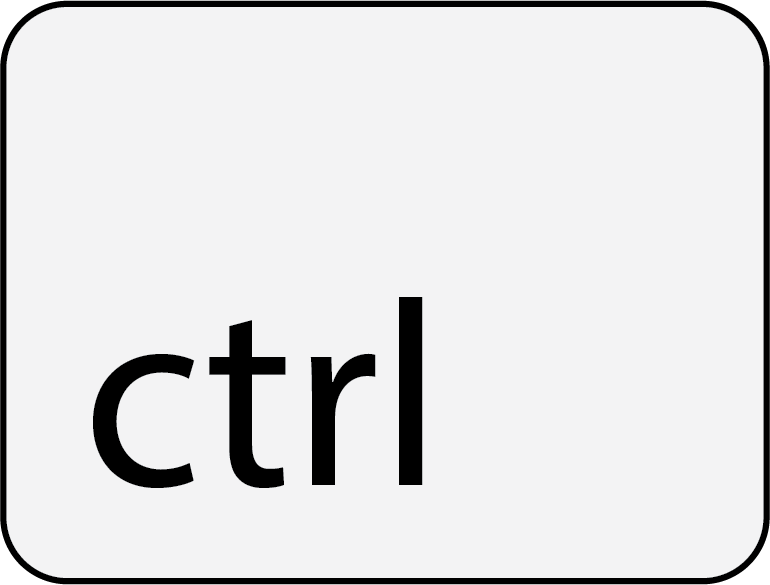Reaction Pathways
\(k\) values come from respective reaction coefficients
\([E]\) represents the concentration of free enzyme
\([S]\) represents the concentration of substrate
\([E \cdot S]\) represents the concentration of an enzyme-substrate complex
\([E \cdot I]\) represents the concentration of an enzyme-inhibitor complex
\([E \cdot I \cdot S]\) represents the concentration of an enzyme-inhibitor-substrate complex
\([E_t]\) is the total enzyme concentration \([E]+[E \cdot S]+[E \cdot I]\)
$$V_\text{max}=k_3 [E_t] ,$$
$$K_M=\frac{k_2+k_3}{k_1} ,$$
$$K_I = \frac{k_5}{k_4} ,$$
The Lineweaver-Burke method in a method of linearizing experimental data. The slope and y
intercept from experimental data can be used to determine \(V_\text{max}\),
\(K_M\), and \(K_I\) from plotted data.
The line is given by
$$y=mx+b$$
where \(m\) is the slope, \(b\) is the y intercept, and \(c\) is the x intercept (the value of x
when y=0).
Competitive Inhibition:
The inhibitor competes with the substrate for the enzyme to form an inactive complex.
$$(1) E+S \rightarrow E \cdot S$$
$$(2) E \cdot S \rightarrow E + S$$
$$(3) E \cdot S \rightarrow P + E$$
$$(4) I + E \rightarrow E \cdot I (\text{inactive})$$
$$(5) E \cdot I \rightarrow E + I$$
$$-r_s=r_p=\frac{V_\text{max}[S]}{[S]+K_M(1+\frac{[I]}{K_I})} ,$$
$$-\frac{1}{r_s}=\frac{1}{[S]}\frac{K_M}{V_\text{max}}(1+\frac{[I]}{K_I})+\frac{1}{V_\text{max}},$$
$$m=\frac{K_M}{V_\text{max}}(1+\frac{[I]}{K_I}) ,$$
$$b=\frac{1}{V_\text{max}},$$
$$c=\frac{1}{K_M(1+\frac{[I]}{K_I})}.$$
Uncompetitive (Anti-Competitive) Inhibition:
The inhibitor binds to the enzyme-substrate complex forming an inhibitor-enzyme-substrate
complex.
$$(1) E+S \rightarrow E \cdot S$$
$$(2) E \cdot S \rightarrow E + S$$
$$(3) E \cdot S \rightarrow P + E$$
$$(4) I + E \cdot S \rightarrow I \cdot E \cdot S (\text{inactive})$$
$$(5) I \cdot E \cdot S \rightarrow I + E \cdot S$$
$$-r_s=r_p=\frac{V_\text{max}[S]}{K_M+[S](1+\frac{[I]}{K_I})} ,$$
$$-\frac{1}{r_s}=\frac{1}{[S]}\frac{K_M}{V_\text{max}}+\frac{1}{V_\text{max}}(1+\frac{[I]}{K_I}),$$
$$m=\frac{K_M}{V_\text{max}} ,$$
$$b=\frac{1}{V_\text{max}}(1+\frac{[I]}{K_I}),$$
$$c=\frac{1}{K_M}(1+\frac{[I]}{K_I}).$$
Noncompetitive Inhibition (Mixed Inhibition):
Mixed inhibition is most commonly seen for enzymes with two or more substrates. The inhibitor
can bind to the enzyme or enzyme-substrate complex. The substrate can also bind to the
inhibitor-enzyme complex.
$$(1) E+S ⇌ E \cdot S$$
$$(2) E + I ⇌ I \cdot E (\text{inactive})$$
$$(3) E \cdot S \rightarrow P + E$$
$$(4) I + E \cdot S ⇌ I \cdot E \cdot S (\text{inactive})$$
$$(5) S + I\cdot E ⇌ I \cdot E \cdot S (\text{inactive})$$
$$-r_s=r_p=\frac{V_\text{max}[S]}{(K_M+[S])(1+\frac{[I]}{K_I})} ,$$
$$-\frac{1}{r_s}=\frac{1}{[S]}\frac{K_M}{V_\text{max}}(1+\frac{[I]}{K_I})+\frac{1}{V_\text{max}}(1+\frac{[I]}{K_I}),$$
$$m=\frac{K_M}{V_\text{max}}(1+\frac{[I]}{K_I}) ,$$
$$b=\frac{1}{V_\text{max}}(1+\frac{[I]}{K_I}),$$
$$c=K_M.$$
Substrate (self) inhibition:
In the case of uncompetitive inhibition, the inhibitor ties up the enzyme-substrate complex to
form an inactive substrate-enzyme-substrate complex.
$$(1) E+S \rightarrow E \cdot S$$
$$(2) E \cdot S \rightarrow E + S$$
$$(3) E \cdot S \rightarrow P + E$$
$$(4) S + E \cdot S \rightarrow S \cdot E \cdot S (\text{inactive})$$
$$(5) S \cdot E \cdot S \rightarrow S + E \cdot S$$
$$-r_s=r_p=\frac{V_\text{max}[S]}{K_M+[S]+\frac{[S]^2}{K_I}} ,$$
$$-\frac{1}{r_s}=\frac{1}{[S]}\frac{K_M}{V_\text{max}}+\frac{1}{V_\text{max}}(1+\frac{[S]}{K_I}).$$
This plot is not linear because the y intercept depends on the substrate concentration \([S]\).
Reference
[1] H. S. Fogler, Essentials of Chemical Reaction Engineering, 1st ed., Upper Saddle
River, NJ:
Pearson Higher Education, 2010 pp. 364-370.
 +
+  on
Mac
or
on
Mac
or  +
+  on
Windows. To zoom in, use
on
Windows. To zoom in, use  +
+  on
Mac
or
on
Mac
or  +
+  on
Windows.
on
Windows.